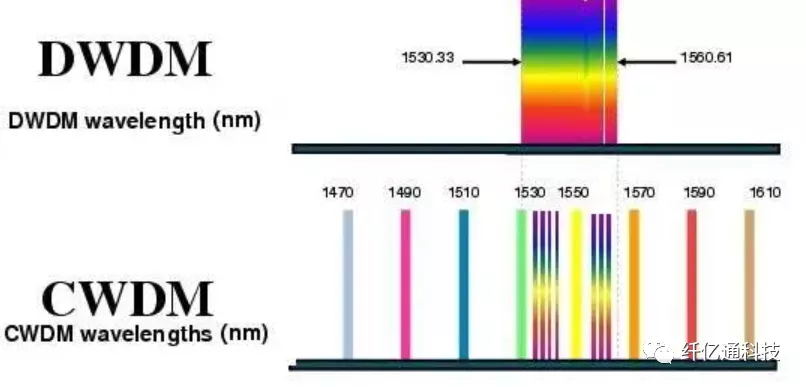The 10-year-old Sharetop network engineer tells you how to choose the most appropriate active wavelength division and passive wavelength division
When it comes to wavelength division multiplexers, I think you can blurt out two words right away
“CWDM”and“DWDM”
So how to choose active wavelength division or passive wavelength division?
First, determine whether you want the wavelength division, CWDM or DWDM
Because both wavelength division include active and passive products
If you don't know how to distinguish between the two, look down
CWDM and DWDM are wavelength division multiplexers. What's the difference between them?
CWDM (i.e. sparse wavelength division multiplexing) and DWDM (i.e. dense wavelength division multiplexing). Literally, we can roughly see that the difference between the two is: "dense" and "sparse". Sparse wavelength division multiplexing, as the name suggests, is a close relative of dense wavelength division multiplexing.

For coarse wavelength division CWDM and dense wavelength division DWDM, which one to choose in transmission is mainly judged from their differences.
1) The wavelength of CWDM is 1270-1610nm, one wavelength every 20nm, a total of 18 wavelengths; The wavelength of DWDM is mainly C-band, 40 commonly used wavelengths - c21-c60; Therefore, from the perspective of business channels, the difference is still relatively large, DWDM is recommended for large transmission traffic.
2) Judging from the transmission distance, CWDM cannot add optical amplification equipment, but can only be used for short-distance transmission, and DWDM can add and play Large equipment to achieve long-distance transmission.
3) In terms of cost, the price of CWDM is a little cheaper than that of DWDM, and the color light module of 10 Gigabit CWDM is better than that of DWDM The color light module is expensive. The color light module of Gigabit CWDM is cheaper than that of DWDM, so it depends on the specific project situation, The quotation for two configurations is compared.
Passive wavelength division
Passive wavelength division refers to independent optical transmission equipment that does not need power supply. The optical transmission system built with passive wavelength division as the main equipment is called passive wavelength division system.
Active wave division
Active wave division refers to the integrated wave division made of active frame. The active frame integrates various functional boards at the same time, such as wave division board, optical amplification board, dispersion compensation board, service access board, optical protection board and gateway board. The optical transmission system built with active wave division as the main equipment is called active wave division system.
Advantages and disadvantages of passive wavelength division system
v1) The main equipment is passive wavelength division, which does not need power supply and has low failure rate.
2) The cost of passive wavelength division system is low.
3) Simple to use: passive wavelength division is a plug and play wavelength division system, which is simple and convenient to use.
4) The color light module is easy to generate heat on the switch, and the heat dissipation is not good, resulting in reduced performance and life.
5) Each type of passive wavelength division system is an independent packaging equipment, which makes the system look numerous and messy.
Advantages and disadvantages of active wavelength division system
v1) Active wave division system includes network management system, which can monitor the whole system in real time and facilitate operation and maintenance.
2) The color light module inserted into the active wavelength division equipment is more stable, longer service life and more stable system.
3) At the same time, it can online and remotely monitor the light receiving and emitting of each optical module, early warning and alarm, so as to facilitate fault location.
4) Support users to access the unified network management access platform through MIB library, which is convenient for customers to monitor multiple systems at the same time.
5) Compared with passive WDM system, active WDM system has higher network construction cost and higher requirements for technicians.
In conclusion, the network structure is relatively simple (the number of stations is small, the business volume is small, there is no network management requirements, and the network construction budget is low). It is recommended to choose passive wavelength division system. The network structure is complex (there are many stations, a large amount of business, network management requirements and high network construction budget). It is recommended to choose active wave division system.
XYT is a professional optical transmission overall network solution provider. It can help you realize optical fiber expansion in the most economical, direct and effective way, regardless of its advantages in product, scheme design, operation and maintenance and price.

隐私保护 |
法律声明 |
在线留言 |
网站导航 |
网站地图 |
文档下载 | 咨询热线:0755-27524036 |
订阅
深圳纤亿通科技有限公司版权所有 转载必究 Copyright 2010-2019 poptimes CO.,Ltd. All rights reserved.
备案号:粤ICP备14020946号
友情链接: 光创未来| fiber168| 纤亿通光源放大器网站| 纤亿通光模块网站| 纤亿通保偏无源器件网站| 纤亿通OTN网站

